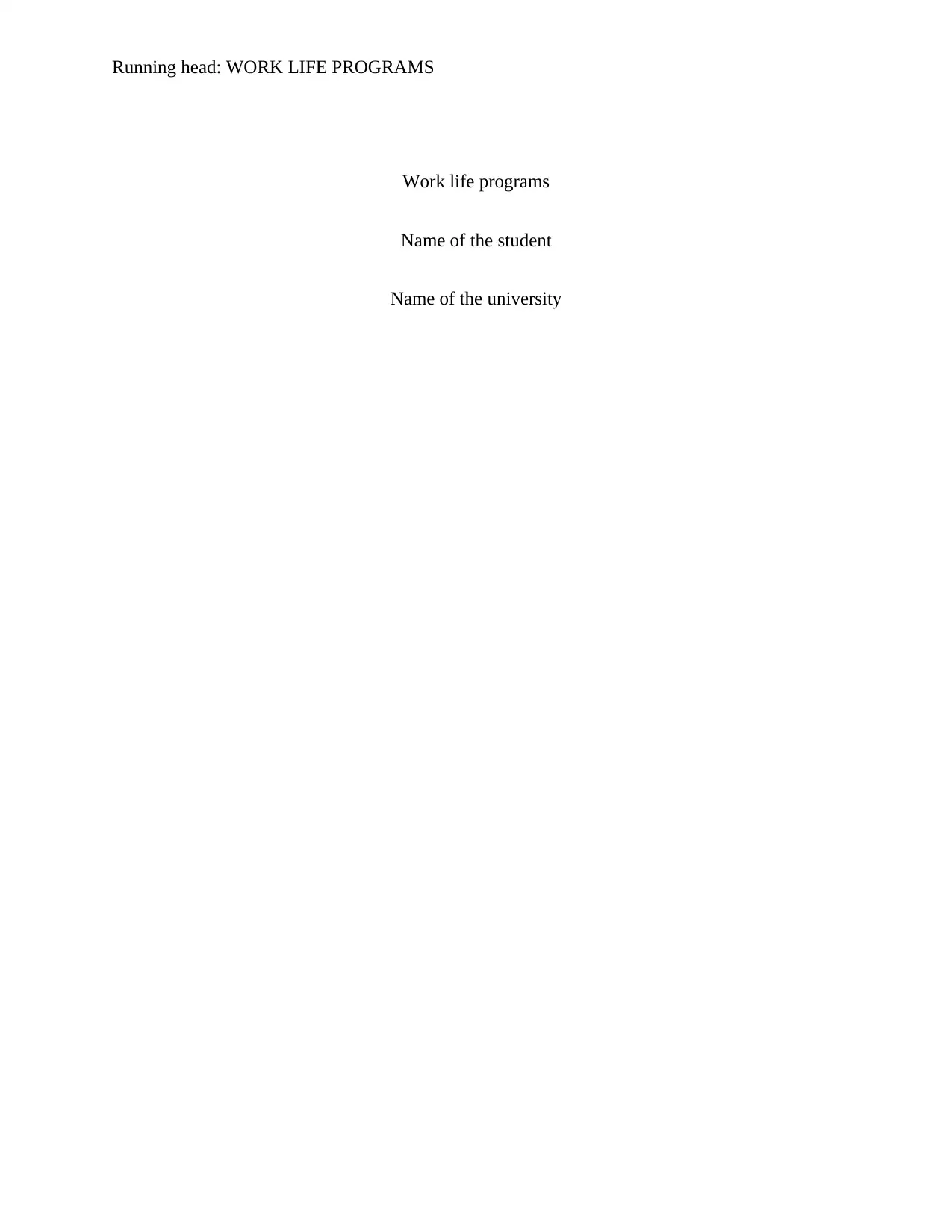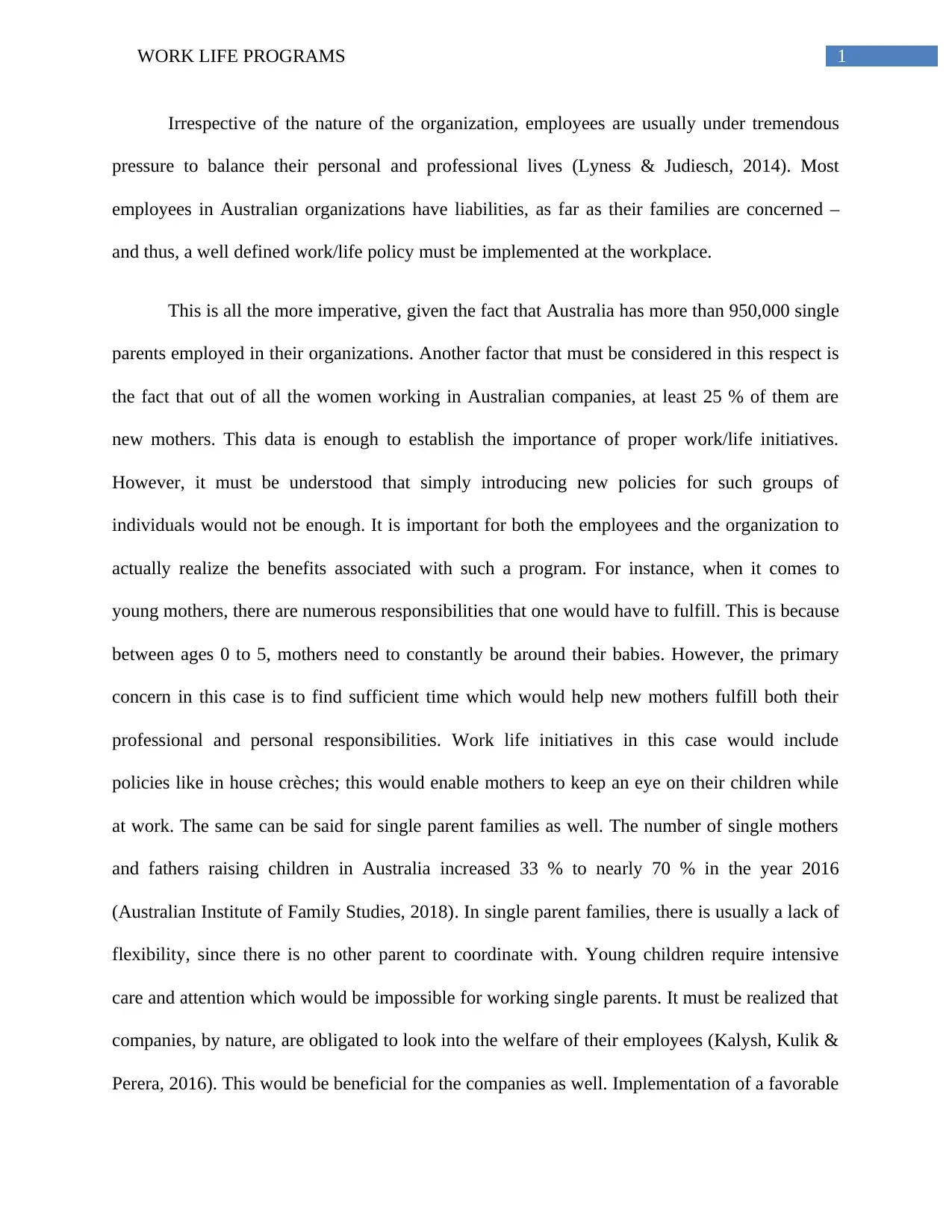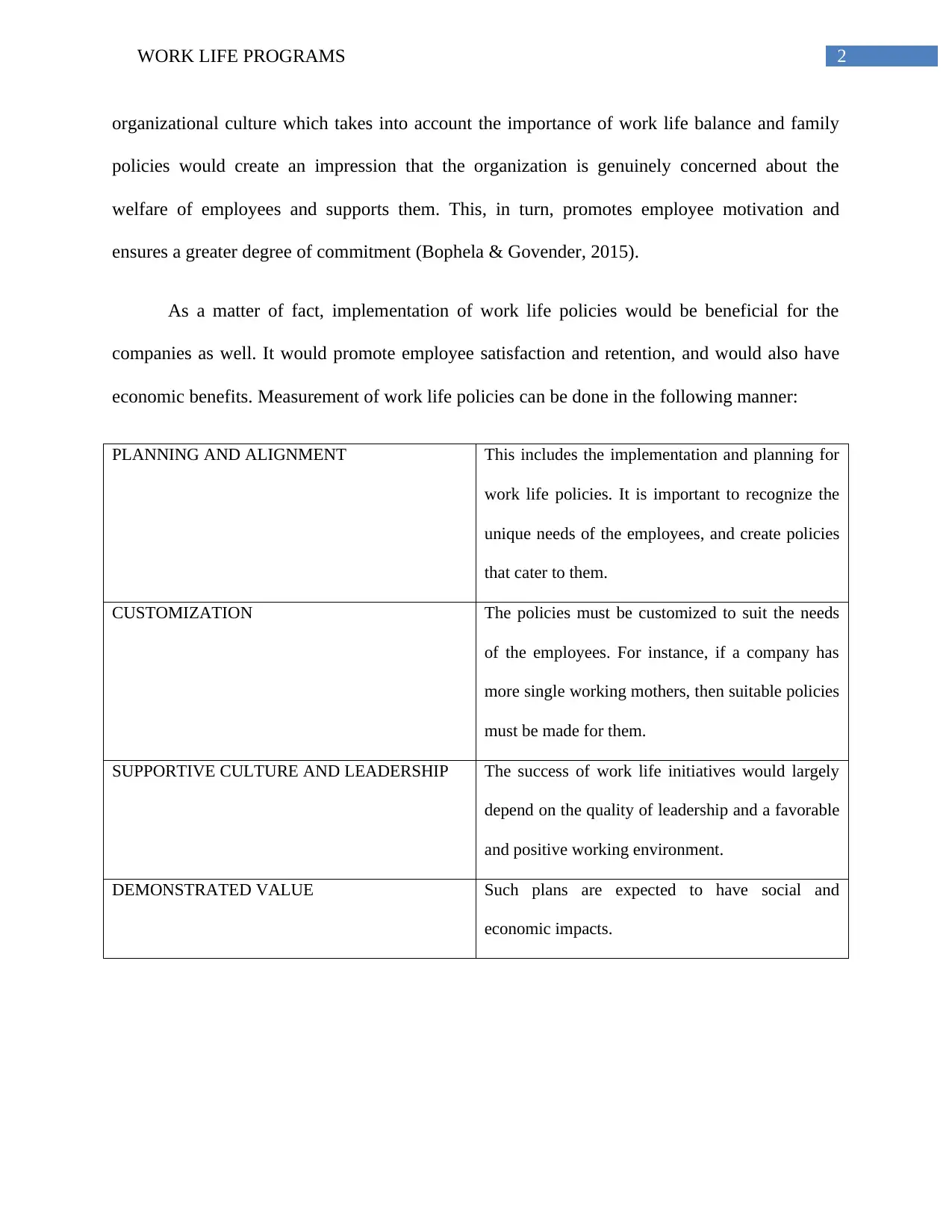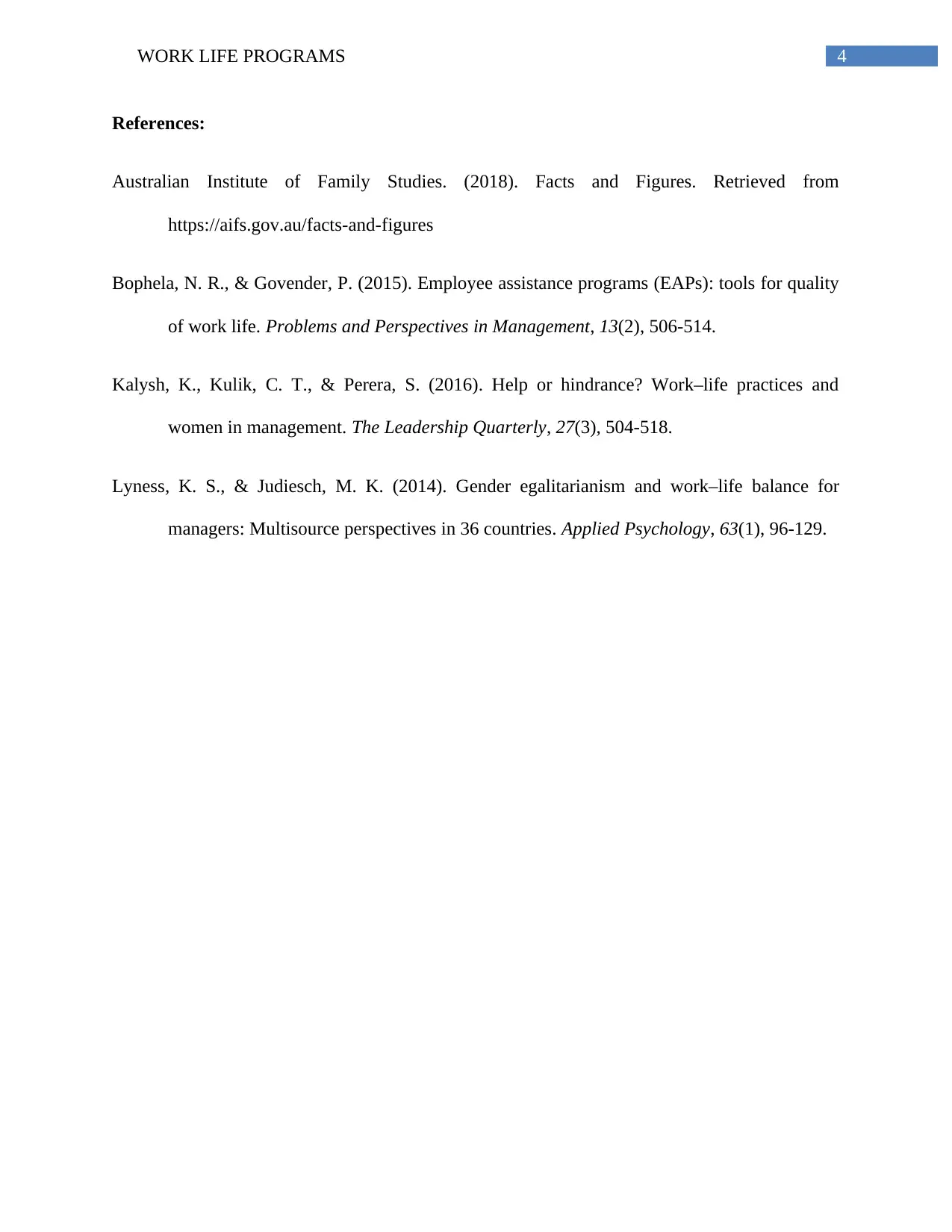Importance of Work Life Programs in Australian Organizations
VerifiedAdded on 2023/06/08
|5
|820
|117
Essay
AI Summary
This essay explores the critical role of work-life programs in Australian organizations, emphasizing the need for employees to balance their personal and professional lives. It highlights the increasing number of single parents and working mothers in Australia, underscoring the importance of implementing well-defined work-life policies. The essay argues that simply introducing policies is insufficient; both employees and the organization must recognize the associated benefits. Examples such as in-house crèches for young mothers and the need for flexibility for single parents are discussed. The essay further contends that companies have an obligation to look after their employees' welfare, which in turn promotes employee motivation, commitment, satisfaction, and retention, ultimately benefiting the company economically. It concludes by emphasizing the necessity of introducing robust work-life programs and measuring their success through planning, customization, supportive culture, and demonstrated value.
1 out of 5












![[object Object]](/_next/static/media/star-bottom.7253800d.svg)